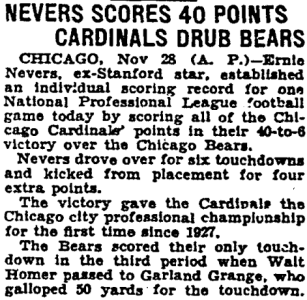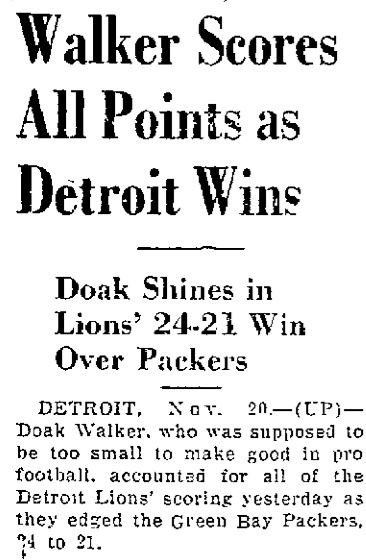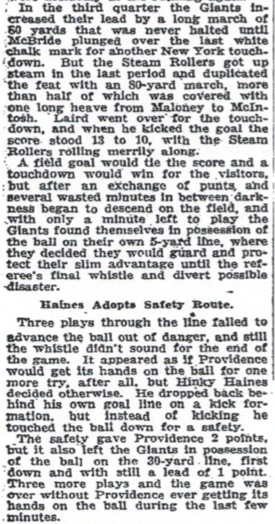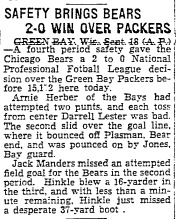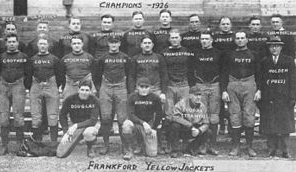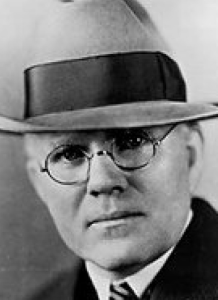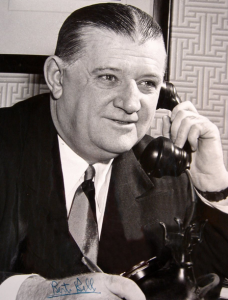Darren Sproles, hero of the Vertically Challenged and one of the best multi-purpose backs of his generation, was at it again Monday night in Indianapolis. The Eagles’ 5-foot-6, 181-pound dynamo had a career-high 178 yards from scrimmage as Philadelphia rallied to ruin the Colts’ evening, 30-27. (The breakdown: 152 receiving — also a career best — and 26 rushing.)
That means that in Sproles’ two outings since joining Philly as a free agent, he’s had momentum-turning 49-yard touchdown run against the Jaguars and a highlight-reel game against Indy, one that included catches of 57 and 51 and a 19-yard draw-play TD.
Nine years into his career, defensive coordinators are still trying to cover him out of the backfield with linebackers. (You almost felt sorry for Indy’s Josh McNary on the 57-yarder.) They’re still trying to pretend, when he comes into the game, that he doesn’t require special attention. Then again, maybe they don’t notice that he’s out there. He’s very adept at hiding behind his blockers.
Sproles’ running style might best be described as Duck and Dart — duck under the flailing arms of would-be tacklers and dart into (and through) hairline cracks in the defense. He doesn’t return kickoffs anymore, and he hasn’t run back a punt for a score since 2011, but he still has it in him. Even at 31, he’s got a nice burst.
He’s also been fortunate to play for coaches who maximized his abilities — first Norv Turner in San Diego, then Sean Payton in New Orleans and now Chip Kelly in Philadelphia. By the time he’s done, he’ll have, by my guesstimate, 7,500 of the quietest yards from scrimmage in NFL history. I say “quietest” because he’s never made the Pro Bowl . . . and probably never will.
Here’s all you really need to know about Sproles: In 10 playoff games, he’s scored seven TDs. (And in one of them, all he did was return kicks.) OK, here’s something else you could stand to know about him: In 2011 he just missed becoming the first running back in 53 years to carry 75-plus times in a season and average 7 yards an attempt. His numbers: 87 rushes, 603 yards, 6.93 average.
Which raises the question: Where does he rank among pro football’s all-time mighty mites? Answer: Well, he’s certainly a first-teamer. A look at some other notable players who measured 5-6 and under:
● Joey Sternaman, QB, 1922-25, ’27-30 Bears — 5-6, 152. Sternaman, a fine “field general” (as they were called in those days) and kicker, led the NFL in scoring in 1924 with 75 points (six touchdowns, nine field goals, 12 PATs), was third the next year with 62 and made all-pro both seasons. (He also was the younger brother of Dutch Sternaman, who shared ownership of the Bears with George Halas in the early days).
● Gus Sonnenberg, T-FB, 1923, ’25-28, ’30 Columbus/Detroit/Providence — 5-6, 196. A wild man on and off the field, Sonnenberg, like Sternaman, did some of his best work with his right foot, booting nine field goals, including a 52-yarder, in 1926. He was voted all-NFL three times and started on the Steam Roller’s 1928 title team. He then turned to professional wrestling and became the heavyweight “champion” of the world (I use quotation marks because, hey, this is wrestling we’re talking about.)
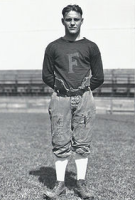
Henry “Two Bits” Homan
● Henry “Two Bits” Homan, B, 1925-30 Frankford — 5-5, 145. Helped the Yellow Jackets win their only championship in 1926 by catching a last-second touchdown pass in the big December game against the Bears. (The thrower of the pass? Houston Stockton, grandfather of basketball great John Stockton.) Got his nickname, one of his teammates told me, from Guy Chamberlin, Frankford’s Hall of Fame player-coach. It was the same name Chamberlin had given his bulldog.
● Butch Meeker, B, 1930-31 Providence — 5-3, 143. Butch’s career was short and relatively nondescript, but he did have one shining moment. In a 7-7 tie against Frankford in 1930, he returned the opening kickoff 95 yards for a TD and then — brace yourself — kicked the extra point. Has any other 5-3 player ever done that?
● Gil “Frenchy” LeFebvre, B, 1933-35 Cincinnati/Detroit — 5-6, 155. LeFebvre took a different route to the NFL: He developed his football talents in the Navy rather than in college. As a rookie, though, he set a record that stood for 61 years: He returned a punt 98 yards for a touchdown to nail down a 10-0 victory over the Brooklyn Dodgers. Fielding the kick was a risky maneuver that surprised the Cincinnati crowd, the Associated Press reported, but “gasps turned to cheers as the runner . . . started down the field.” It was LeFebvre’s only TD in the NFL.
● Willis “Wee Willie” Smith, B, 1934 Giants — 5-6, 148. Let’s spend a little time with Smith, because I came across a story about him, written by Henry McLemore of the United Press, that actually quoted him (a rarity in the ’30s). Smith wasn’t just undersized, you see, he was also — unbeknownst to most — blind in one eye.
The first time Giants coach Steve Owen saw him on the practice field, he said, “Son, you’re too damn little. You wouldn’t last a first down in this business. You may have been a son of a gun out there with [the University of] Idaho, but these pro guys would bust you in two.”
Smith was undaunted. “Maybe they will,” he replied. “But what about letting me hang around until they do? My family will send for the body, so it won’t cost you anything.”
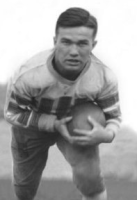
Willis “Wee Willie” Smith
In his only year in the league, Wee Willie rushed 80 times for a 4-yard average, scored two touchdowns on the ground and threw for another as the Giants won the title. He explained his running technique to McLemore this way: “I just sorta roll with those big guys’ tackles like a fighter does with a punch on the jaw. I make it a point never to meet one of those guys head on. I duck ’em, like you would a train.”
Except for one time, when his competitiveness got the best of him and he sank his helmet into the stomach of Bronko Nagurski, the Bears’ block of granite. Nagurski’s alleged reply: “Mickey Mouse, you better watch where you’re going, else you’re going to hurt somebody.”
FYI: Smith’s listed weight of 148 might have been a bit on the high side. Dr. Harry March, the Giants’ first general manager, insisted Wee Willie was “about 140 stripped,” and McLemore joked: “Feed Willis Smith a dozen alligator pears, drape him in a double-breasted coat, give him the Dionne quintuplets to hold, and he might weigh all of 145 pounds.”
● Buddy Young, B, 1947-55 New York Yankees/Dallas Texans/Baltimore Colts — 5-4, 175. Young needs less of an introduction than the rest. After all, he’s in the Pro Football Hall of Fame. Few backs in his era were more dangerous running, receiving and returning. Not only did he have world-class speed (10.5 for 100 meters), he had — there’s no denying this — a weird-shaped body to try to tackle. What a nightmare in the open field.
● Billy Cross, RB, 1951-53 Cardinals — 5-6, 151. In The Sporting News, Ed Prell described him as “almost as small as the midget Bill Veeck of the St. Louis Browns smuggled into baseball.”
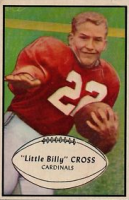
“Little Billy” Cross
Whenever a sportswriter brought up Cross’ weight, Billy would be sure to say, smiling, “And that’s before a game.”
The kid was a terrific athlete, though, who at West Texas A&M high jumped 6-1 — seven inches above his height — and earned Little All-America honors as the quintessential scatback. In his second NFL game, he scored on an 18-yard run and a 39-yard pass against the Bears, and in his three seasons he averaged about 50 yards from scrimmage per Sunday. Pretty productive.
“When I’m going into a line and see a guy like [Hall of Famer] Arnie Weinmeister of the Giants,” Cross once said, “I know I’m not going through. He only outweighs me by 100 pounds. . . . But give me a little daylight, and the chase is on.”
● “Mini Mack” Herron, RB, 1973-75 Patriots/Falcons — 5-5, 170. Drugs derailed Herron’s career, but he’ll always have 1974. That was the season he set an NFL record for all-purpose yards (2,444), tied for third in the league in touchdowns (12) and also ranked high in yards from scrimmage (1,298, seventh), punt return yards (517, second), punt return average (14.8, fourth) and several other categories. He and fullback Sam “Bam” Cunningham were quite a combination in the New England backfield.
● Lionel “Little Train” James, RB-WR, 1984-88 Chargers — 5-6, 171. In 1985 James became the first NFL running back to rack up 1,000 receiving yards in a season — 1,027 to be exact. (Later the same afternoon, the 49ers’ Roger Craig became the second.) Just one back has gained more (Marshall Faulk, 1,048 with the Super Bowl-winning ’99 Rams).
And Sproles makes 11. My own personal Mount Rushmore: Young, Sonnenberg, Sproles and Herron (what might have been).
Sources for statistics: pro-football-reference.com, Total Football.


